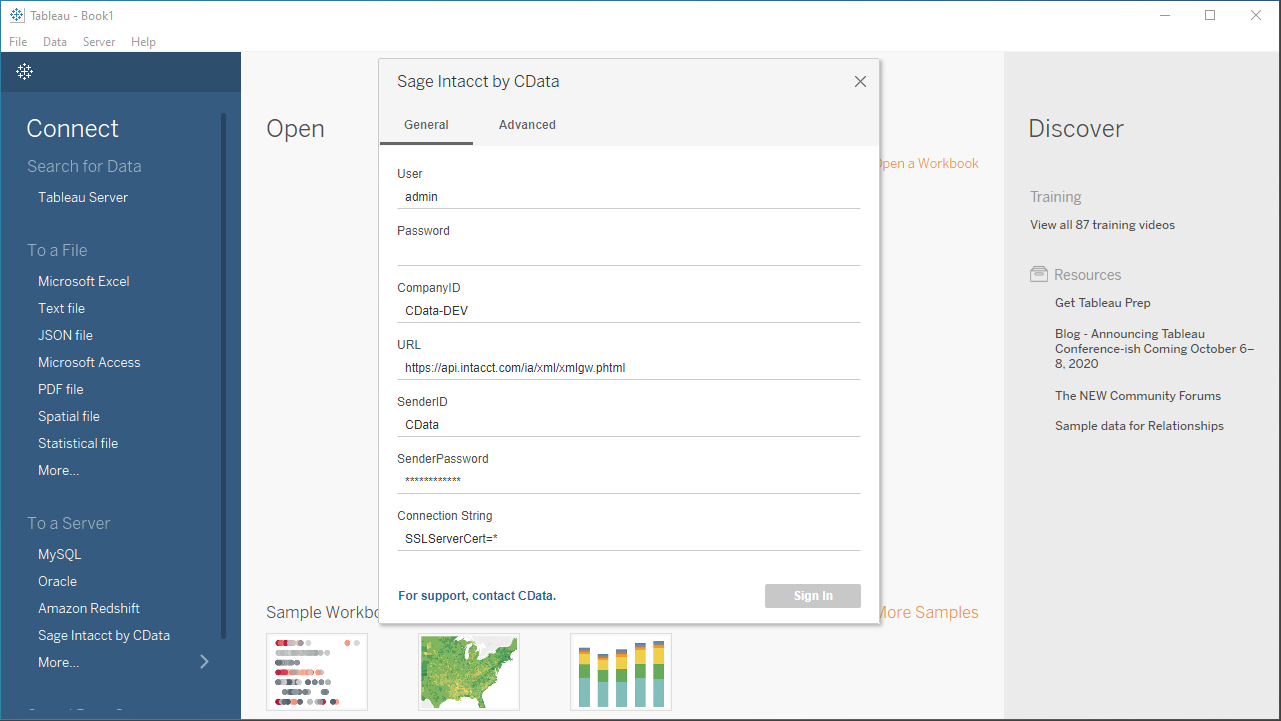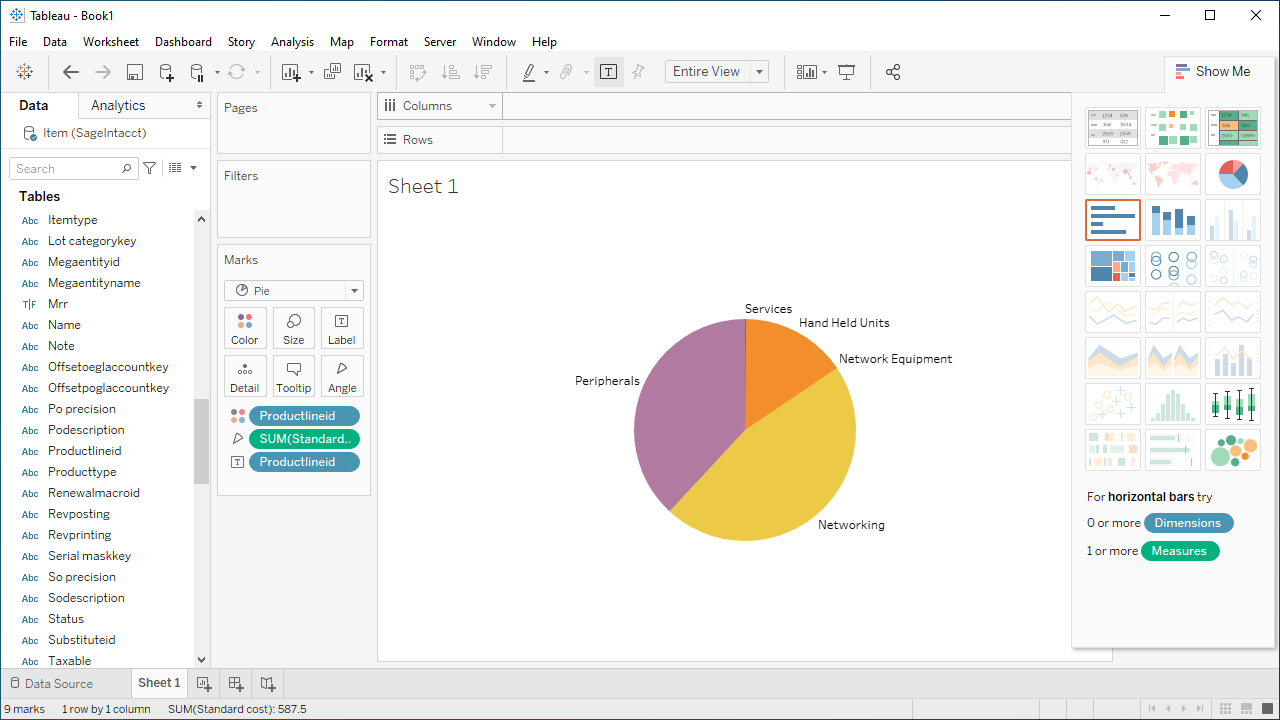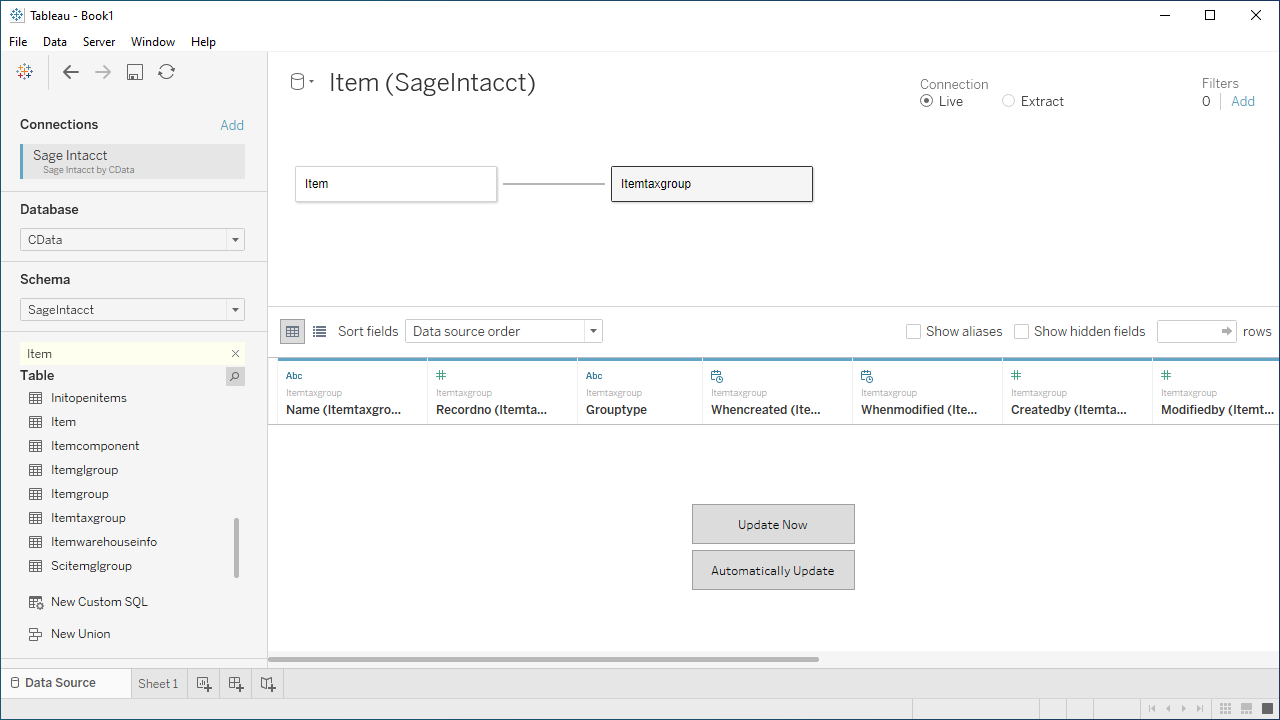Discover how a bimodal integration strategy can address the major data management challenges facing your organization today.
Get the Report →Visualize Live Kintone Data in Tableau
Use CData Tableau Connectors and Tableau Desktop to visualize live Kintone data.
Tableau is a visual analytics platform transforming the way businesses use data to solve problems. When paired with the CData Tableau Connector for Kintone, you can easily get access to live Kintone data within Tableau. This article shows how to connect to Kintone in Tableau and build a simple chart.
The CData Tableau Connectors enable high-speed access to live Kintone data in Tableau. Once you install the connector, you simply authenticate with Kintone and you can immediately start building responsive, dynamic visualizations and dashboards. By surfacing Kintone data using native Tableau data types and handling complex filters, aggregations, & other operations automatically, CData Tableau Connectors grant seamless access to Kintone data.
NOTE: The CData Tableau Connectors require Tableau 2020.3 or higher. If you are using an older version of Tableau, you will need to use the CData Tableau Connector for Kintone. If you wish to connect to Kintone data in Tableau Cloud, you will need to use CData Connect Cloud.
Connect to Kintone in Tableau
Open Tableau and click More under Connect -> To a Server. Select "Kintone by CData," then configure the connection and click "Sign In."
In addition to the authentication values, set the following parameters to connect to and retrieve data from Kintone:
- Url: The URL of your account.
- GuestSpaceId: Optional. Set this when using a guest space.
Authenticating with Kintone
Kintone supports the following authentication methods.
Using Password Authentication
You must set the following to authenticate:
- User: The username of your account.
- Password: The password of your account.
Using Basic Authentication
If the basic authentication security feature is set on the domain, supply the additional login credentials with BasicAuthUser and BasicAuthPassword. Basic authentication requires these credentials in addition to User and Password.
Using Client SSL
Instead of basic authentication, you can specify a client certificate to authenticate. Set SSLClientCert, SSLClientCertType, SSLClientCertSubject, and SSLClientCertPassword. Additionally, set User and Password to your login credentials.

Discover Schemas and Query Data
- Select CData from the Database pull-down menu.
- Select Kintone from the Schema pull-down menu.
- Drag the tables and views you wish to visualize onto the join area. You can include multiple tables.
![Selecting table(s)]()
- Select Update Now or Automatically Update. Update Now lets you preview the first 10,000 rows of the data source (or enter the number of rows you want to see in the Rows text box). Automatically Update automatically reflects the changes in the preview area.
- Click the tab for your worksheet. Columns are listed as Dimensions and Measures, depending on the data type. The CData Tableau Connector discovers data types automatically, allowing you to leverage the powerful data processing and visualization features of Tableau.
- Drag a field from the Dimensions or Measures area to Rows or Columns. Tableau creates column or row headers.
- Select one of the chart types from the Show Me tab. Tableau displays the chart type that you selected.

Using the CData Tableau Connector for Kintone with Tableau, you can easily create robust visualizations and reports on Kintone data. Download a free, 30-day trial and get started today.







